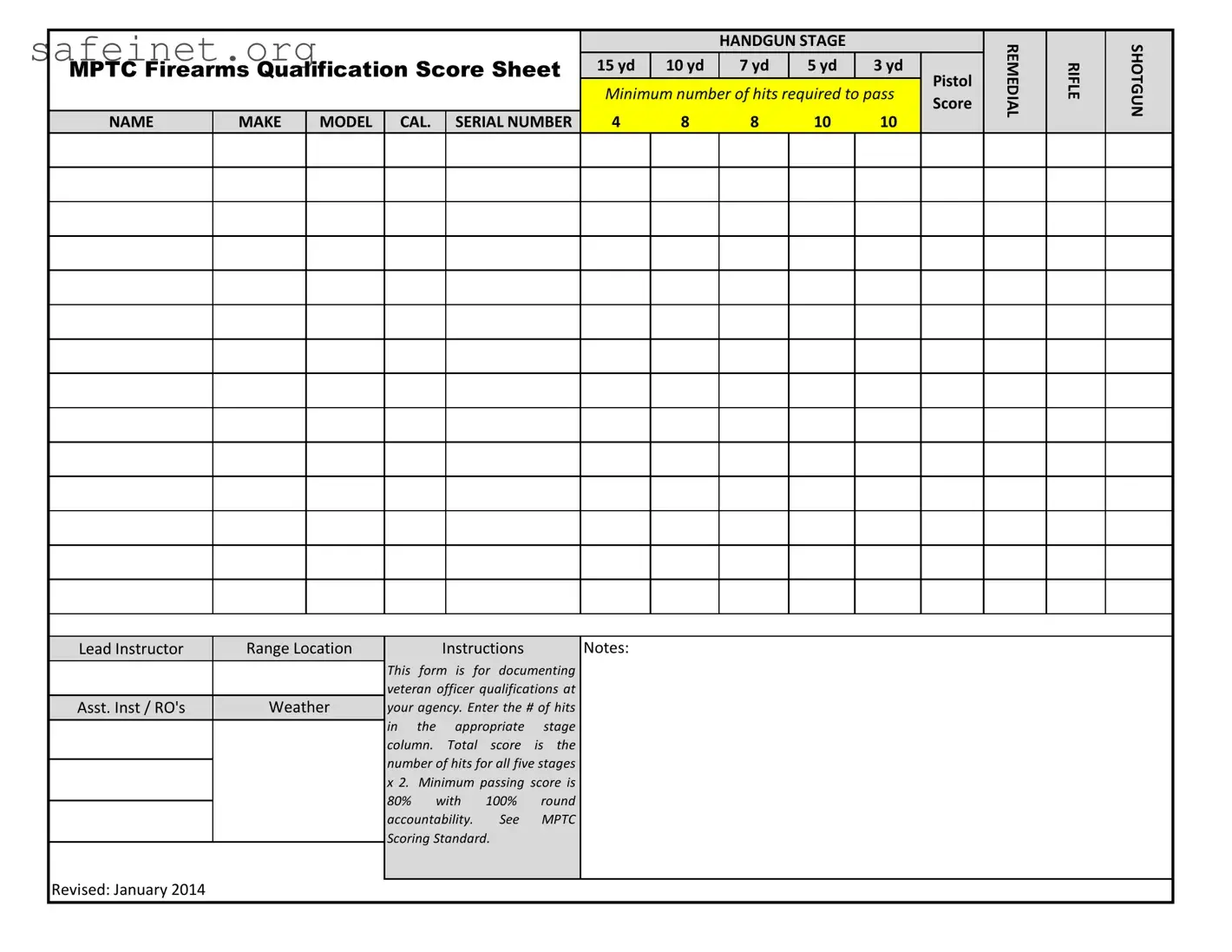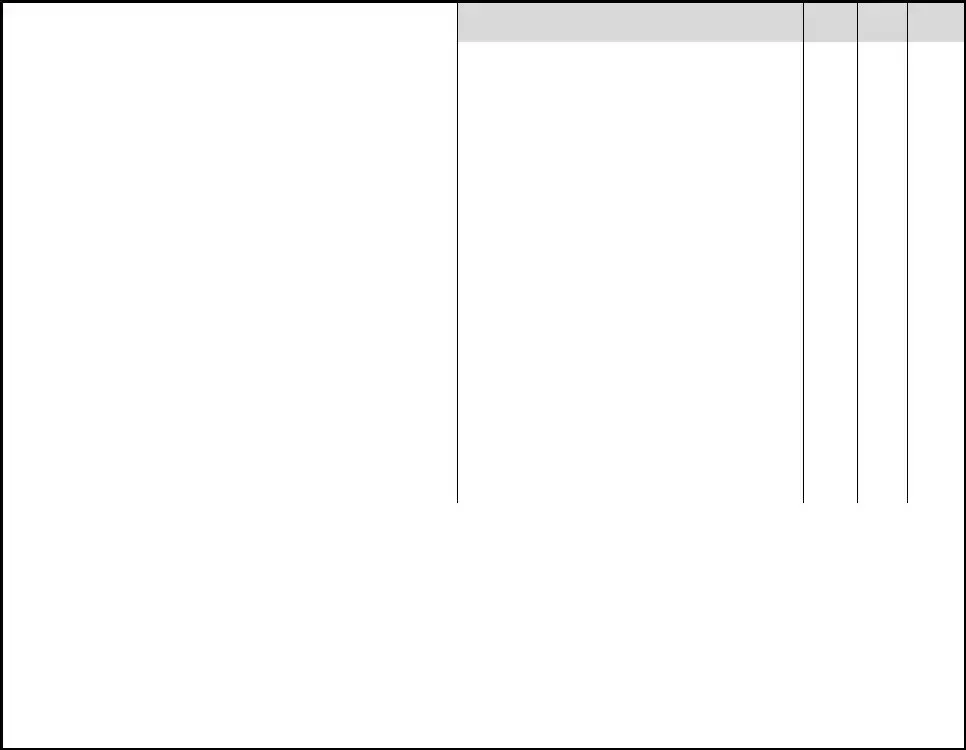What is the purpose of the Firearms Qualification Score Sheet?
The Firearms Qualification Score Sheet is used to document the qualifications of veteran officers during firearms training exercises. It tracks their performance across various distances and stages, ensuring accountability and adherence to training standards.
What information is required on the Score Sheet?
The Score Sheet requires several key pieces of information: the name of the officer, the make and model of the firearm being used, the caliber, and the serial number of the firearm. This information is essential for ensuring accurate recordkeeping and compliance with training requirements.
How is the scoring calculated?
The total score is derived from the number of hits recorded in each stage, across five different distances. Each hit counts for two points. To pass qualification, officers must achieve a minimum score of 80%, with a strict requirement for 100% round accountability. It is imperative that all hits are correctly documented in their respective stage columns.
What are the stages and distances included in the training?
The training includes five distinct stages, each measured from varying distances: 15 yards, 10 yards, 7 yards, 5 yards, and 3 yards. Each stage has a minimum number of hits required to pass, which needs to be adhered to in order to qualify successfully.
Who is responsible for completing the Score Sheet?
The lead instructor or designated range officer is tasked with overseeing the completion of the Score Sheet. They ensure that all data is accurately recorded and that the officers’ performances are evaluated according to the MPTC Scoring Standard.
What should be done if there are discrepancies in the recorded scores?
If discrepancies arise in the recorded scores, they must be immediately addressed. It is important to review the original scores documented in each stage column to confirm their accuracy. Any necessary corrections should be made in a timely manner to maintain the integrity of the qualification process.

